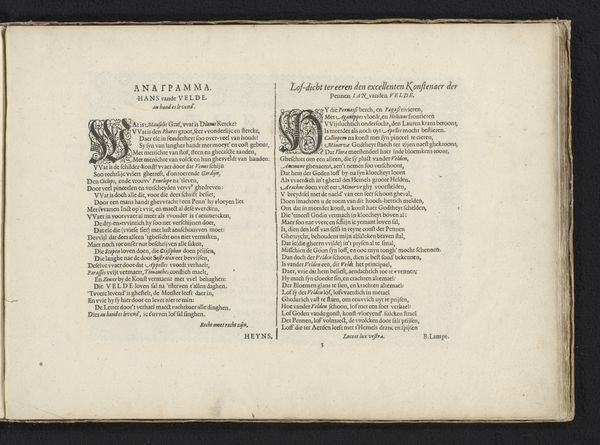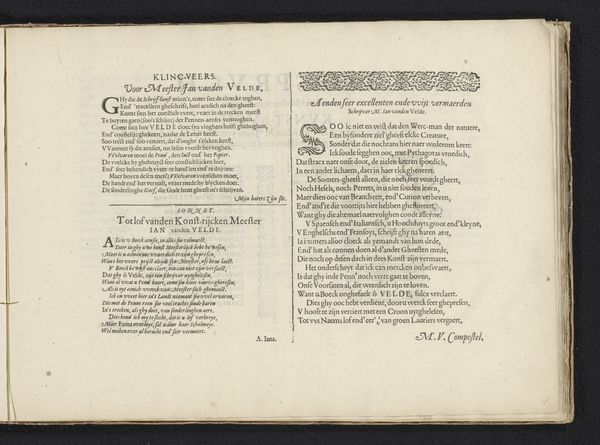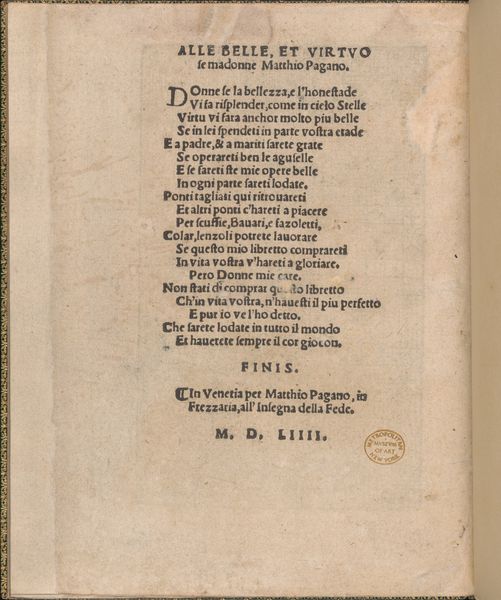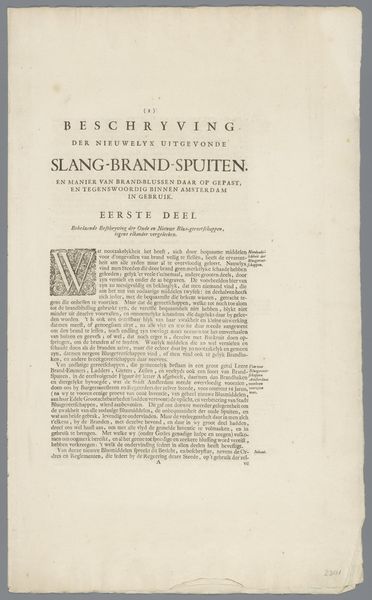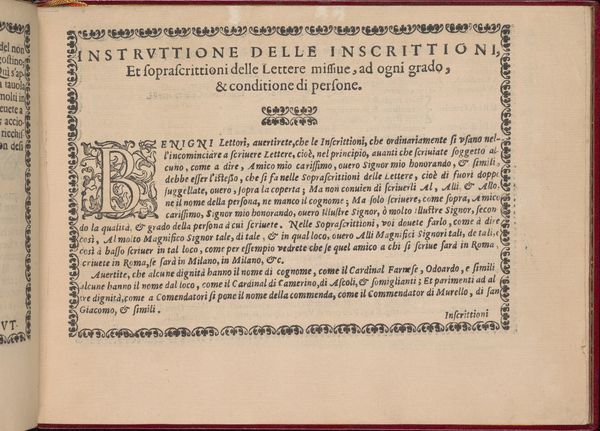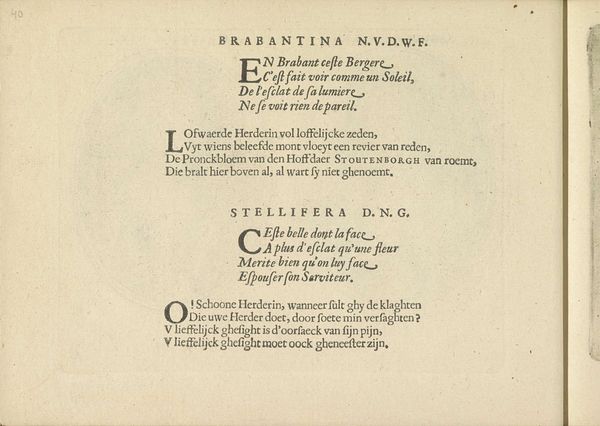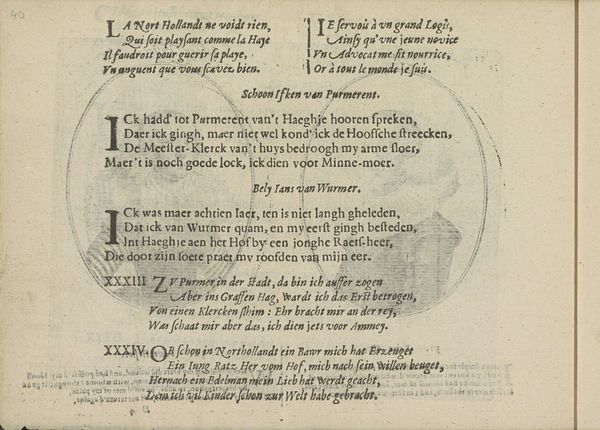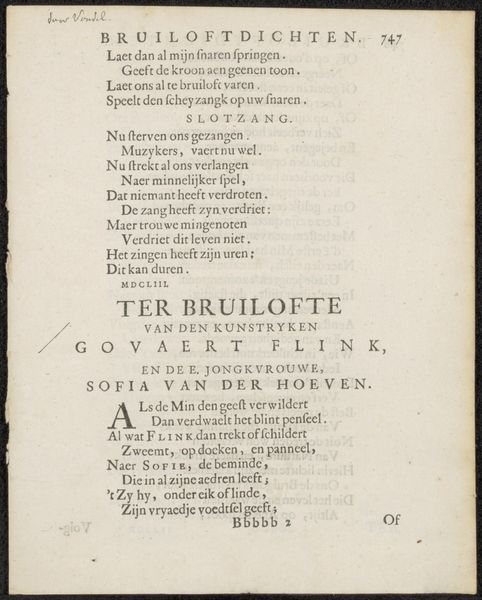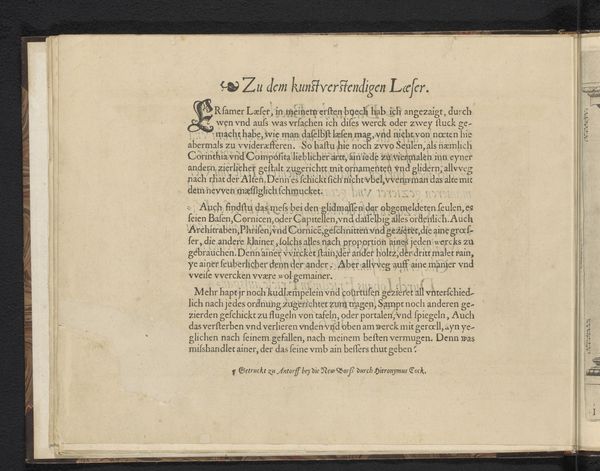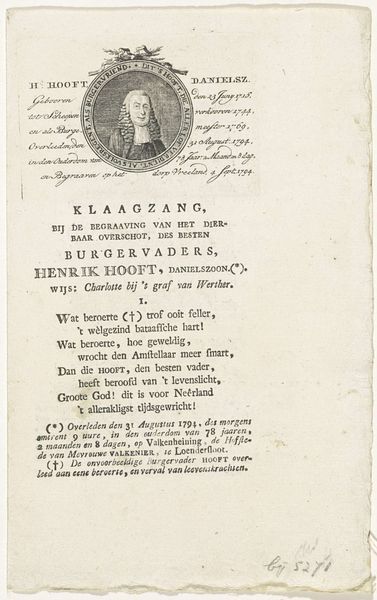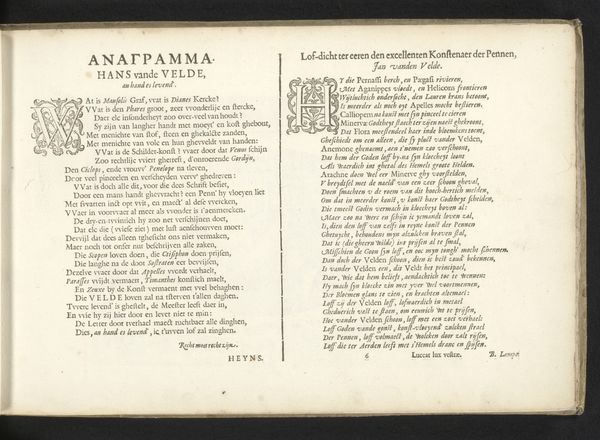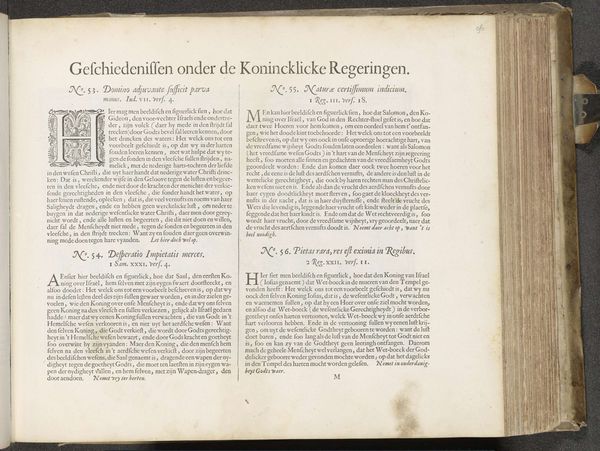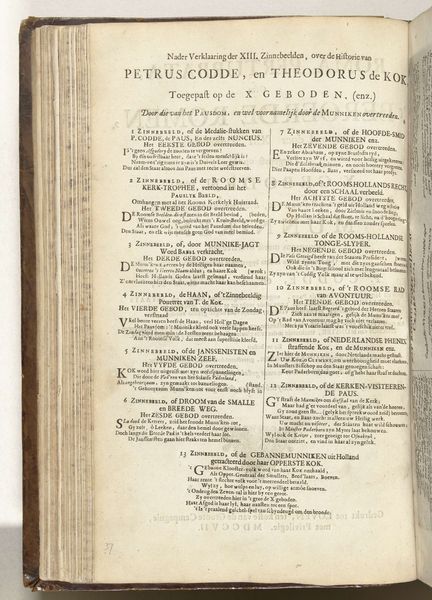
print, textile, paper, typography, engraving
#
script typeface
#
aged paper
#
parchment
# print
#
textile
#
paper
#
11_renaissance
#
personal sketchbook
#
typography
#
thick font
#
handwritten font
#
golden font
#
letter paper
#
engraving
#
historical font
#
columned text
#
calligraphy
Dimensions: height 210 mm, width 315 mm
Copyright: Rijks Museum: Open Domain
Curator: The visual weight is extraordinary for such a delicate medium. I find the contrast of dark ink on aged paper deeply compelling. Editor: I agree, there is something instantly captivating about its aesthetic. What can you tell me about this print? Curator: This is "Grieks huldedicht," or "Greek Homage," dating back to 1605 and made by Philips Lasson. Given the materials, its creation involved a fascinating blend of craftsmanship and early printing technology. I can imagine the meticulous labor in carving those letterforms for the printing plate. The paper too speaks to production practices of that time, the consumption of materials that tell its own story. Editor: So, we're not just admiring a poem but also glimpsing into the printmaking process. Thinking about reception, who would have viewed this, where and under what circumstances? Was this a private commission, perhaps showcased within academic circles? Curator: Considering Lasson was a scholar himself, and that the text is in Greek, its immediate audience may have been relatively limited: fellow academics, perhaps a wealthy patron with humanist interests. It might also circulate amongst printing workshops where fine typography and calligraphy were highly valued, less for wider public consumption and more as a display of artisanal mastery. Editor: Interesting. It seems designed for the learned few. The typography has that formal yet fluid handwritten font characteristic, what can you tell us about that from your perspective? Curator: Absolutely. Typography as print demands a translation of artistic design choices into the labor of manufacturing. We are meant to experience it simultaneously as reproducible document and high form of art. Notice, too, how the texture of the aged paper interacts with the ink: chance events giving depth to each character, rendering it unique. This kind of material artifact gives new dimension to studying early printed matter. Editor: So much weight on the material circumstances, then! This truly showcases that every detail in an art piece reflects some kind of social process or technological influence present at the time. Curator: Precisely. Through this object, we touch the labor and conditions, revealing layers about production, skill, value, and intent behind art of that time. Editor: Thank you. It brings early print into better, more concrete perspective for me. Curator: Likewise. The art has become more vivid by revealing processes which underpin its existence.
Comments
No comments
Be the first to comment and join the conversation on the ultimate creative platform.
